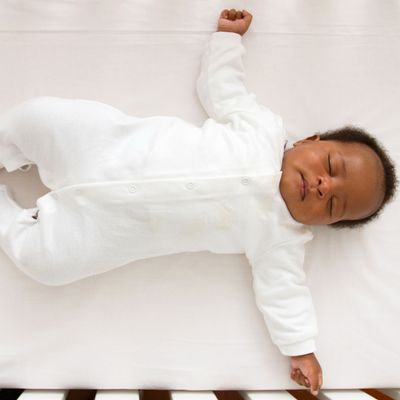
A new study of 160 infants monitored their sleeping, via video, for one night at ages 1 month, 3 months, and 6 months to determine whether parents were putting them to bed in environments deemed “unsafe” by the American Academy of Pediatrics. The conclusion: People really aren’t following the AAP’s directives.
In 1992, the American Academy of Pediatrics established “back to sleep” guidelines stating that all babies should be put to sleep on their backs. The guidelines led to a massive reduction in SIDS deaths, and in 2011, the organization expanded on them to combat rising sleep deaths from suffocation. The latest version of the rules states that a safe sleep environment for babies is in their own crib, with no pillows, blankets, toys, or bumpers. These guidelines are to be followed for the first year or more of a child’s life.
The study’s participants agreed to monitoring and knew in advance what night it would happen, yet many of them still put their babies to bed in what are considered “unsafe” environments. At the age of one month, 91 percent of babies were put to sleep with unapproved items in their sleeping surface: bumpers, pillows, blankets, stuffed animals, and sleep positioners, and 14 percent were put to sleep either on their side or stomach. At the age of three months, 18 percent were put to sleep in positions other than on their backs, while 87 percent had “potentially hazardous” items in their sleeping environment. And by six months, 93 percent of babies had unapproved items in their cribs.
This suggests two possible explanations: First, many parents — if not most — remain uneducated about the hazards of unsafe sleep environments. Second, it illustrates just how hard following that advice can actually be. Seeing a very tiny baby in a giant crib with no blanket, no pillow, and not even a soothing toy can be very stressful. So stressful, in fact, that it can lead to a hazardous cozying-up of the environment.
The conclusion of the study puts it best, and bluntly: “Most parents, even when aware of being recorded, placed their infants in sleep environments with established risk factors.” But the study should serve as a warning and a reminder to new parents that these practices can potentially have grave consequences.




